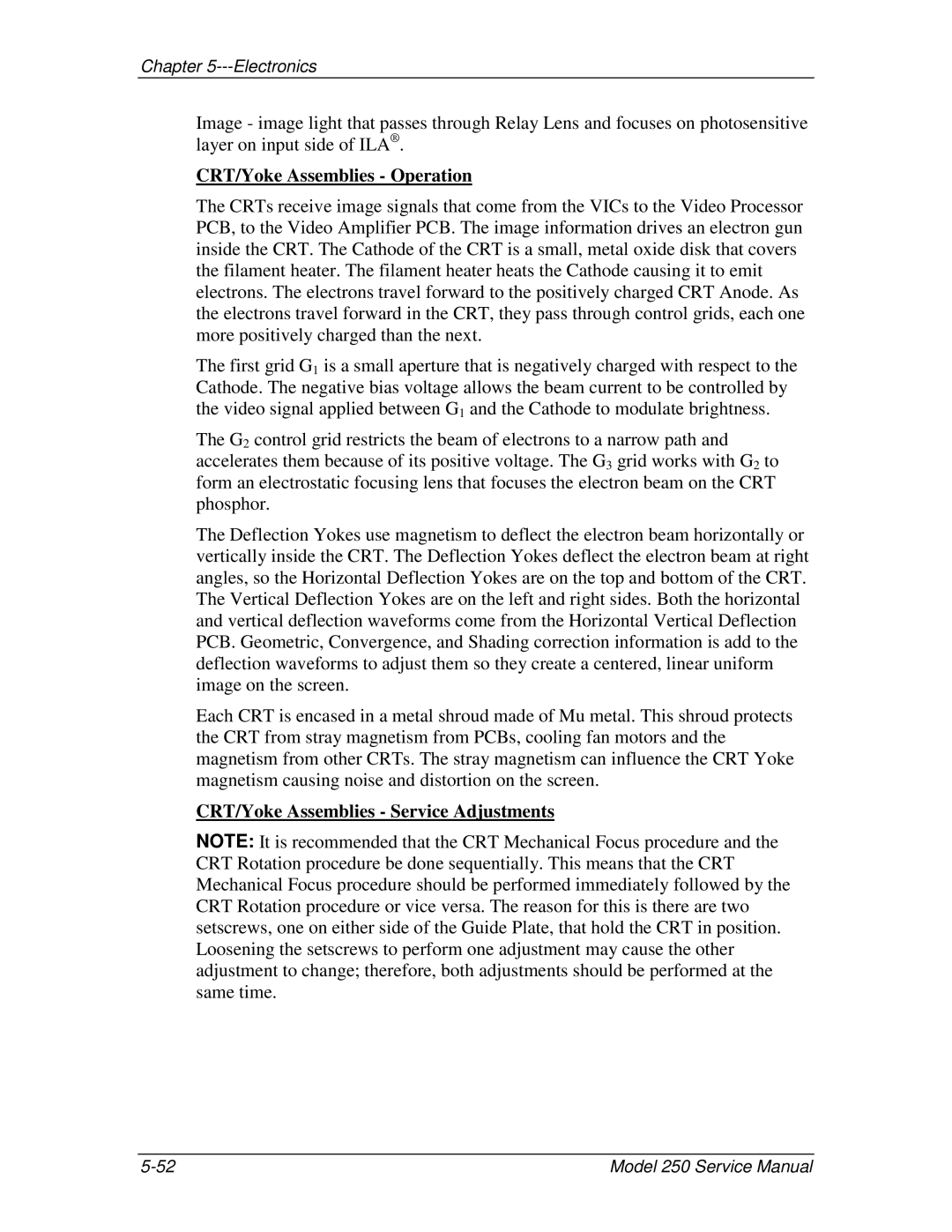
Chapter 5---Electronics
Image - image light that passes through Relay Lens and focuses on photosensitive layer on input side of ILA® .
CRT/Yoke Assemblies - Operation
The CRTs receive image signals that come from the VICs to the Video Processor PCB, to the Video Amplifier PCB. The image information drives an electron gun inside the CRT. The Cathode of the CRT is a small, metal oxide disk that covers the filament heater. The filament heater heats the Cathode causing it to emit electrons. The electrons travel forward to the positively charged CRT Anode. As the electrons travel forward in the CRT, they pass through control grids, each one more positively charged than the next.
The first grid G1 is a small aperture that is negatively charged with respect to the Cathode. The negative bias voltage allows the beam current to be controlled by the video signal applied between G1 and the Cathode to modulate brightness.
The G2 control grid restricts the beam of electrons to a narrow path and accelerates them because of its positive voltage. The G3 grid works with G2 to form an electrostatic focusing lens that focuses the electron beam on the CRT phosphor.
The Deflection Yokes use magnetism to deflect the electron beam horizontally or vertically inside the CRT. The Deflection Yokes deflect the electron beam at right angles, so the Horizontal Deflection Yokes are on the top and bottom of the CRT. The Vertical Deflection Yokes are on the left and right sides. Both the horizontal and vertical deflection waveforms come from the Horizontal Vertical Deflection PCB. Geometric, Convergence, and Shading correction information is add to the deflection waveforms to adjust them so they create a centered, linear uniform image on the screen.
Each CRT is encased in a metal shroud made of Mu metal. This shroud protects the CRT from stray magnetism from PCBs, cooling fan motors and the magnetism from other CRTs. The stray magnetism can influence the CRT Yoke magnetism causing noise and distortion on the screen.
CRT/Yoke Assemblies - Service Adjustments
NOTE: It is recommended that the CRT Mechanical Focus procedure and the CRT Rotation procedure be done sequentially. This means that the CRT Mechanical Focus procedure should be performed immediately followed by the CRT Rotation procedure or vice versa. The reason for this is there are two setscrews, one on either side of the Guide Plate, that hold the CRT in position. Loosening the setscrews to perform one adjustment may cause the other adjustment to change; therefore, both adjustments should be performed at the same time.
Model 250 Service Manual |
